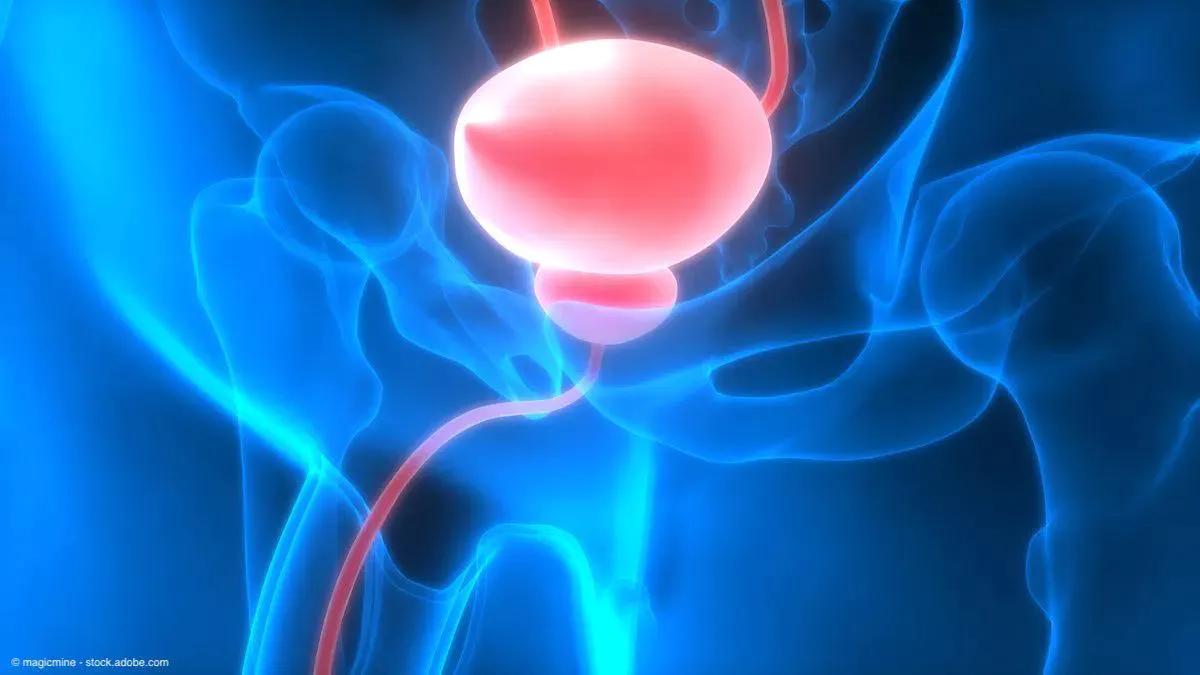News
Article
UK’s NICE recommends Aquablation for BPH
Author(s):
Support for the NICE recommendation included 5-year results from the WATER trial, which showed that Aquablation had strong efficacy and safety vs transurethral resection of the prostate in patients with BPH.
The UK’s National Institute for Health and Care Excellence has granted the "standard arrangements" recommendation, it’s strongest endorsement, to Aquablation for the treatment of patients with benign prostatic hyperplasia (BPH).1
In the pivotal WATER trial, 5-year results showed that IPSS scores improved by 15.1 points with Aquablation compared with 13.2 points with TURP in patients with BPH.

"Aquablation therapy has consistently shown itself to be a reliable and safe robotic treatment for BPH over the years,” Neil Barber, BSc, MBBS, FRCS, clinical lead of urology, Frimley Health NHS Foundation Trust and director of the Frimley Benign Prostate Clinical Research Centre, stated in a press release.1 “Garnering the premier evidence-based recommendation from NICE not only raises the standard of care for urologists in the UK but also serves as a strong catalyst for its broader adoption. We've witnessed countless men whose lives have been dramatically improved by this treatment, evident from our growing waiting list of those opting for Aquablation therapy over other solutions."
A pivotal study supporting the NICE recommendation is the WATER trial, 5-year results from which showed that Aquablation demonstrated strong efficacy and safety vs transurethral resection of the prostate (TURP) for the treatment of men with lower urinary tract symptoms (LUTS) related to BPH.
Results from the study published in the Canadian Journal of Urology showed that International Prostate Symptom Score (IPSS) scores at 5 years improved by 15.1 points with Aquablation compared with 13.2 points with TURP (P = .2764).2 Across all follow-up visits for patients with larger prostates (>50 mL), the reduction in IPSS was 3.5 points higher with Aquablation vs TURP (P = .0123). Peak urinary flow rate compared to baseline improved by 125% vs 89% in the Aquablation and TURP groups, respectively. The rate of retreatment (needing surgical intervention or BPH medication) for patients receiving Aquablation was about 1% per year. Compared to TURP, this represented a 51% reduction.
The prospective, randomized, double-blind, multicenter WATER trial (NCT02505919) compared the safety and efficacy of Aquablation and TURP as surgical treatments for BPH-related LUTS in men aged 45 to 80 years old who had a prostate size of 30 mL to 80 mL. Patient characteristics at baseline were well balanced between the study arms. Patients were randomized in a 2:1 ratio to Aquablation or TURP. The 5-year analysis included 116 patients randomized to Aquablation and 65 patients randomized to TURP.
It was previously determined that the study met its primary end point with Aquablation leading to a 16.9 mean IPSS decrease from baseline compared with a mean decrease of 15.1 points with TURP (P <.0001 for noninferiority; P = .1346 for superiority).
Regarding safety, the event rate at 3 months was 26% with Aquablation vs 42% with TURP (P = .0149). The rate of procedure-related ejaculatory dysfunction was 7% vs 25%, respectively (P = .0004).
"After an extensive multi-year evaluation, we're elated to share that Aquablation therapy has received the top-tier recommendation from NICE,” Sham Shiblaq, executive vice president and chief commercial officer of Aquablation developer PROCEPT BioRobotics, stated in a news release.1 “Although NICE's purview is the UK, its clinical endorsements have significant international influence. This bolsters our conviction that Aquablation therapy is on course to be the global standard of care for BPH."
References
1. Aquablation® Therapy with "Standard Arrangements" Recommendation. Published online October 12, 2023. Accessed October 16, 2023. https://ir.procept-biorobotics.com/news-releases/news-release-details/national-institute-health-and-care-excellence-endorses
2. Gilling PJ, Barber N, Bidair M, et al. Five-year outcomes for Aquablation therapy compared to TURP: results from a double-blind, randomized trial in men with LUTS due to BPH. Can J Urol. 2022;29(1):10960-10968.












